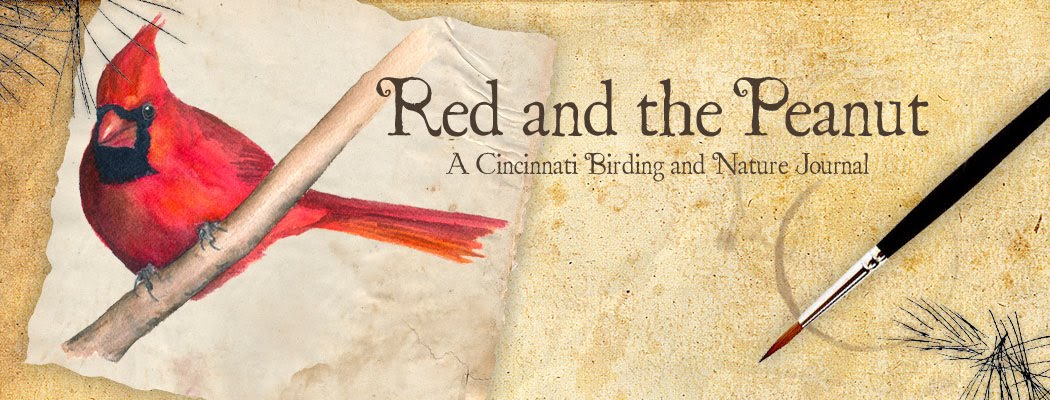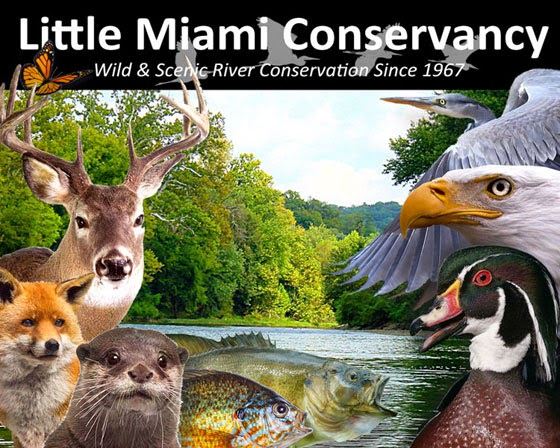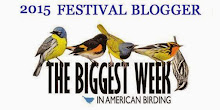We've been back from Hawaii for two months, and I still haven't posted any of the birds we saw there. I think it's about time I got busy. Here's the first in a Hawaiian Birds series:
On June 28, Rick and Matty, and our friends, Cindy, Tom, Emily and Joe all went out to Molokini (a submerged volcanic crater that forms a small island off Maui) to snorkel. They took a
Trilogy sailing trip out to Molokini and had an amazing time. Unfortunately, I couldn't go because I get seasick...horribly seasick, but I wasn't too disappointed because I had plans to go to the
Kealia Coastal Boardwalk at Kealia Pond...
 |
| ...even the Kealia Coastal Boardwalk sign is beautiful. I loved the vibrant painting of the Hawaiian Stilt and the Hawaiian Coot. |
I really didn't know what to expect when I got there. From all I had read, summer was the "off season" for Kealia Pond, but it wasn't the off season for me. As soon as I started walking the boardwalk, I started hearing the insistent kek-kek-kek call of the beautiful and graceful Hawaiian Stilt (
Himantopus mexicanus knudseni), which led me directly to an area where a few of the gorgeous birds were foraging. On the U.S. Fish and Wildlife Service web site, the phrase
"Chihuahua of the wetland" is used to describe their constant chatter. It fits, and you can hear the bird's call in the following video...
Hawaiian Stilt Feeding in the Shallows at the Kealia Coastal Boardwalk on Maui from
Kelly Riccetti on
Vimeo.
This bird is spectacularly slim and delicate looking. Stilts have long, "bubble gum" pink, pencil-thin legs that cut through water effortlessly, and because they are the longest legged of all the shorebirds, they have extra depth when foraging for food. I enjoyed watching him tip his body over to capture invertebrates and other water creatures with his long, thin and pointy bill. Dennis Paulson in his book "Shorebirds of North America" (one of my favorite shorebird ID books) decides stilts should be called "Slenderellas" (
Paulson, pg. 91). What a perfect description!
 |
| A Hawaiian Stilt wades through the mudflats along the Kealia Coastal Boardwalk. Female stilts have a bit of brown on their backs, so this bird is probably a female. Males have only black feathers on their backs. |
Their long, thin pink legs when combined with the sleek black feathers on their head, neck and back, and the snowy white feathers on their belly and throat, create one good-looking bird! There is no getting around it, "Slenderella" is pretty.
 |
| Hawaiian Stilts are visual feeders. This bird definitely has its eye on something here! |
 |
| Hawaiian Stilts look like our Black-necked Stilts, except they have more black on their neck. |
 |
| Interpretive signs on the boardwalk are helpful. At the beginning, maps and other helpful information are on the signs, but as you progress along the boardwalk, the birds take center stage... |
 |
| The Hawaiian word for the Hawaiian Stilt is Ae'o. All the interpretive signs are beautiful and colorful paintings like this one. |
 |
| If you're visiting Maui, definitely make the Kealia Coastal Boardwalk a destination for a birding trip. Even though I was there during the "off season," I saw spectacular birds. Fall and winter are reported as the best viewing times because large numbers of shorebirds overwinter at the ponds and along the boardwalk. |
...more to come on the Kealia Coastal Boardwalk and the Hawaiian Stilt.


























